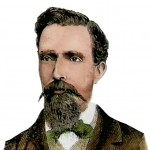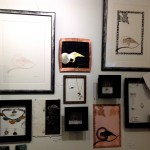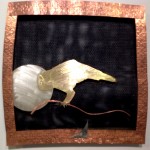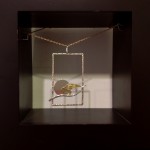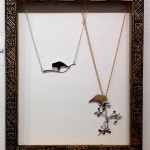January – February 2013
The Chapel + Cultural Center, at the Rensselaer Polytechnic Institute in Troy NY, is proud to present a solo exhibition of P A S S I O N : : The works of Erica Veil.
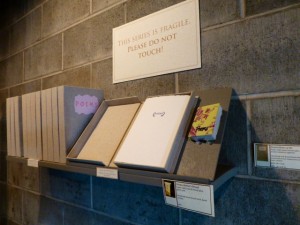
Please join us for the artist’s reception on Thursday, January 10 2013, 6:00-9:00PM.
P R I N T S ::
The Carborundum Aquatint printmaking process, invented in the US in the 1930’s, uses the fine graded carborundum grit that was originally used by printmakers to grind down lithography stones. Mixed in an acrylic medium, varying grits are applied to the plate.
The Engraved plates were made by hand using an electric engraver, using as inspiration two antique Eastern European wood blocks origin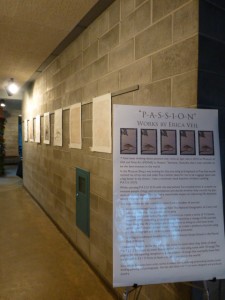 ally used for fabric printing.
ally used for fabric printing.
In the Silk Collograph printmaking process, each plate is covered in a special “silk” fabric. Then acrylic medium is painted onto the silk. Where there is no acrylic medium, the silk holds more ink.
Each plate is then inked fully with oil paint and wiped clean to leave just the right amount of oil paint to make the desired image. Each of the original prints in this show is made with from one to five individual plates.
The Block Prints and Greeting Cards were made with carved rubber blocks.
B O O K S ::
The craft of bookbinding probably originated in India, as a more locally sustainable approach to scrolls, since scrolls made all dependent on Egypt for papyrus.
Buddhist monks took the new idea of the book through Persia, Afghanistan, and Iran, to China in the first century BC.
Erica Veil’s sampling of handmade books begins with the Coptic binding, which is from the Copts (early Christians in Egypt), a bookbinding method that was in use as early as the 2nd century AD.
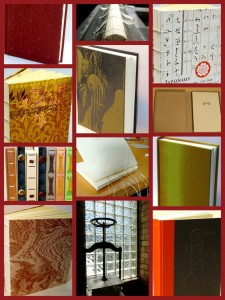 From the 14th century, we have one example of a Limp Vellum binding, bound with specialty handmade Cave Paper.
From the 14th century, we have one example of a Limp Vellum binding, bound with specialty handmade Cave Paper.
There are examples of several variations on the Historic Long-stitch binding in the show. This type of binding is from as early as the 18th century in Europe, possibly earlier elsewhere.
A Bradel binding is a more modern style with a hollow back and visible joint groove. It most resembles a Case binding, both traced to 18th century Germany. Extra steps have been taken to round the backs of the text blocks of these books, adding much strength and stability to the books. These bindings are the most recent hand binding styles leading up to cheap modern-day machine binding.
The Clamshell Boxes for the limited edition of 12 books of Poems are custom handmade using archival materials.
One can expect any book made with traditional hand bookbinding techniques and archival materials to last centuries, if appropriately stored on a bookshelf.
